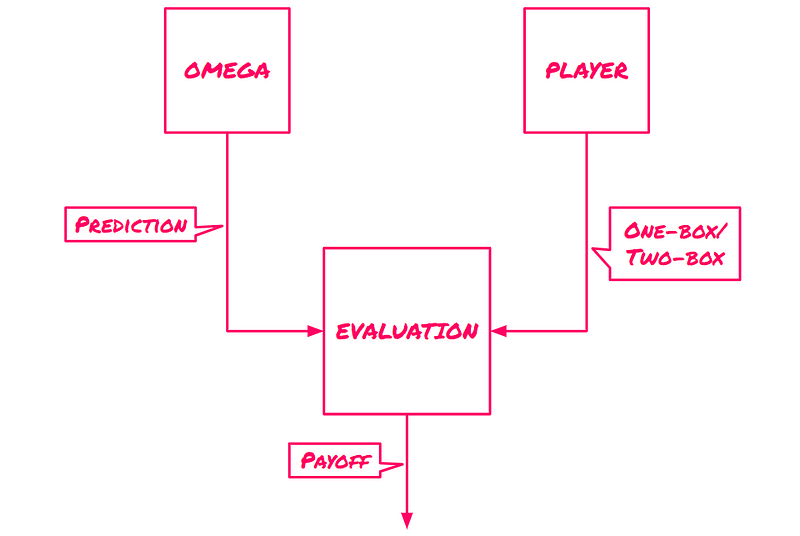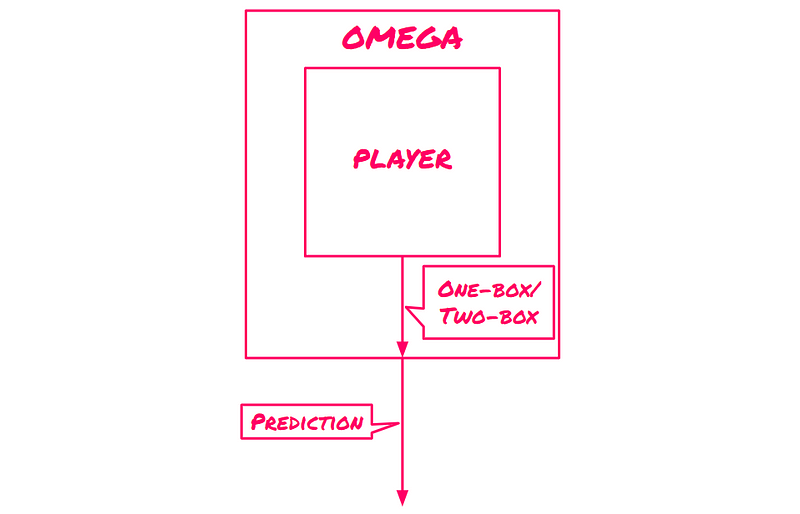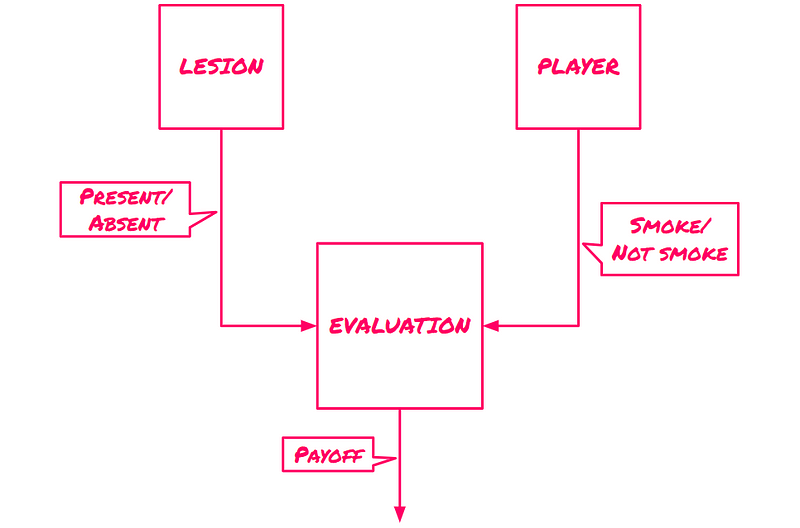# Understanding Superrationality: A Dive into Decision Theory
Written on
Chapter 1: Simulating Newcomb's Problem
Imagine creating a simulation of Newcomb's Problem using a computer. We would design code for each aspect of the dilemma: a PLAYER program that chooses between one-boxing or two-boxing, an OMEGA program that forecasts the PLAYER's choice, and an EVALUATION program that determines the payoff ($0, $1,000, $1,000, $1,000,000, or $1,001,000) based on the outputs from PLAYER and OMEGA.
Our schematic representation of the project would look like this:

Simulating Newcomb's Problem
The code execution would proceed in the following sequence: OMEGA makes its prediction (one-box or two-box), PLAYER executes and provides its choice (one-box or two-box), and then EVALUATION runs to calculate the payoff based on the results from both OMEGA and PLAYER, referring to the table below.

However, we must consider: how does OMEGA arrive at its prediction?
A straightforward solution exists to ensure OMEGA's predictions are accurate: we can provide it with the PLAYER code! This way, OMEGA can execute PLAYER, observe its output (one-box or two-box), and use that to inform its prediction.
Consequently, OMEGA would be structured as follows:

The complete code setup would appear as follows:

Notice that PLAYER is now executed in two instances. This is a vital aspect if we want PLAYER to achieve the maximum possible payoff from EVALUATION. Consider this: what should PLAYER yield—one-box or two-box—if OMEGA uses the exact code to make its prediction?
If PLAYER opts for two-boxing, it does so in the OMEGA program too. As a result, OMEGA predicts PLAYER will two-box, and PLAYER will indeed two-box, resulting in a $1,000 payoff. Conversely, if PLAYER chooses one-box, it also does so within OMEGA. Thus, OMEGA predicts PLAYER will one-box, allowing PLAYER to earn $1,000,000 from EVALUATION.
Clearly, PLAYER should opt for one-boxing. The key question now is how PLAYER should arrive at this conclusion: it cannot rely solely on Evidential Decision Theory (EDT), even though EDT suggests one-boxing, as this would lead to incorrect choices in the context of Smoking Lesion. Speaking of which…

Understanding Smoking Lesion
Here’s a diagram illustrating a Smoking Lesion program. The crucial distinction from Newcomb's Problem is that PLAYER is executed only once! This is because the LESION does not predict the PLAYER's actions. In the Smoking Lesion scenario, the genetic lesion influences smoking behavior to some extent, but it is irrelevant to determining the optimal decision.
Although you might be able to estimate whether a random person in Smoking Lesion smokes based on the presence of the lesion, the lesion itself does not dictate what PLAYER should do. Thus, in the context of Smoking Lesion, PLAYER can choose to smoke, following the recommendation of Causal Decision Theory (CDT). However, this approach fails in Newcomb's Problem, where PLAYER runs twice.
Let’s adapt PLAYER’s decision-making process accordingly! Instead of pondering, “What action yields the best outcome?” as suggested by CDT, PLAYER should consider, “Which output leads to the best outcome?” (where the outputs are either one-box or two-box in Newcomb's Problem).
This may seem a bit perplexing, but let me explain. If PLAYER understands the structure of Newcomb's Problem, it recognizes it will be executed twice. Therefore, it knows that if the output is two-box, it will be two-boxed in both instances; this will result in OMEGA not placing $1,000,000 in Box B.
Thus, the answer to the question “Which output from PLAYER leads to the best outcome?” is one-boxing. In the case of Smoking Lesion, the best action is to smoke, aligning with CDT’s recommendation since PLAYER is only executed once.
This reasoning leads us to a decision-making framework known as Functional Decision Theory, which will be explored in Chapter VI.
Thank you for reading!
If you would like to support Street Science, consider contributing on Patreon.
Relevant Videos
To deepen your understanding of decision theory, check out the following videos:
GAME THEORY: The Pinnacle of Decision Making
This video explores the fundamental concepts of game theory and its application in decision-making scenarios.
What Were You Thinking? Decision Theory as Coherence Test - Prof. Itzhak Gilboa
In this lecture, Prof. Gilboa examines decision theory and its role in assessing coherence in choices.